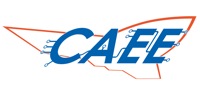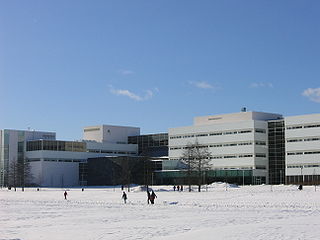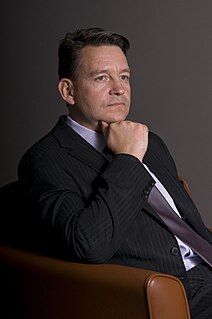
Alan Curtis Kay is an American computer scientist. He has been elected a Fellow of the American Academy of Arts and Sciences, the National Academy of Engineering, and the Royal Society of Arts. He is best known for his pioneering work on object-oriented programming and windowing graphical user interface (GUI) design. He was awarded the Turing award in 2003.
Autonomic computing (AC) refers to the self-managing characteristics of distributed computing resources, adapting to unpredictable changes while hiding intrinsic complexity to operators and users. Initiated by IBM in 2001, this initiative ultimately aimed to develop computer systems capable of self-management, to overcome the rapidly growing complexity of computing systems management, and to reduce the barrier that complexity poses to further growth.
Trajectory optimization is the process of designing a trajectory that minimizes some measure of performance while satisfying a set of constraints. Generally speaking, trajectory optimization is a technique for computing an open-loop solution to an optimal control problem. It is often used for systems where computing the full closed-loop solution is not required, impractical or impossible. If a trajectory optimization problem can be solved at a rate given by the inverse of the Lipschitz constant, then it can be used iteratively to generate a closed-loop solution in the sense of Caratheodory. If only the first step of the trajectory is executed for an infinite-horizon problem, then this is known as Model Predictive Control (MPC).

The Army Research Laboratory (ARL) is the U.S. Army's corporate research laboratory. ARL is headquartered at the Adelphi Laboratory Center (ALC) in Adelphi, Maryland. Its largest single site is at Aberdeen Proving Ground, Maryland. Other major ARL locations include Research Triangle Park, North Carolina, White Sands Missile Range, New Mexico, Orlando, Florida, and NASA's Glenn Research Center, Ohio and Langley Research Center, Virginia. ARL also has regional sites in Los Angeles, Chicago, Austin, TX, and Boston.
The D-Grid Initiative was a government project to fund computer infrastructure for education and research (e-Science) in Germany. It uses the term grid computing. D-Grid started September 1, 2005 with six community projects and an integration project (DGI) as well as several partner projects.

The Center for Advanced Engineering Environments (CAEE) is a department center of the Frank Batten College of Engineering and Technology at Old Dominion University. The center was created in 2001 to serve as a focal point for research activities pertaining to Collaborative distributed Knowledge discovery and exploitation, Interactive visual simulations, Intelligent synthesis, and advanced learning/training technologies and environments, and their application to future complex engineering systems.
Pseudospectral optimal control is a joint theoretical-computational method for solving optimal control problems. It combines pseudospectral (PS) theory with optimal control theory to produce PS optimal control theory. PS optimal control theory has been used in ground and flight systems in military and industrial applications. The techniques have been extensively used to solve a wide range of problems such as those arising in UAV trajectory generation, missile guidance, control of robotic arms, vibration damping, lunar guidance, magnetic control, swing-up and stabilization of an inverted pendulum, orbit transfers, tether libration control, ascent guidance and quantum control.

The Agora Center is a separate institute at the University of Jyväskylä in Central Finland. By its nature, the Agora Center is interdisciplinary and networked. Its purpose is to conduct, coordinate, and administrate top-level research and development that relates to the knowledge society and which places emphasis on the human perspective. The research and development is conducted in the form of fixed-period projects in cooperation with the University of Jyväskylä’s other faculties and separate institutes, businesses, the public sector and other relevant parties. The Agora Center also promotes researcher training through its various research projects. One of the core missions of the Agora Center is to effectively combine research and development with education. The project staff includes a high number of students and post-graduate students.

The European ITEA 2 research project OSAMI targets open source common foundations for a dynamic service-oriented platform which is able to personalize itself in large diversity of cooperating Software Intensive Systems (SIS).

The Istituto Italiano di Tecnologia (IIT) is a scientific research centre based in Genoa . Its main goal is the advancement of science, in Italy and worldwide, through projects and discoveries oriented to applications and technology. Some account IIT as the best Italian scientific research centre.

An Internet area network (IAN) is a concept for a communications network that connects voice and data endpoints within a cloud environment over IP, replacing an existing local area network (LAN), wide area network (WAN) or the public switched telephone network (PSTN).
1QB Information Technologies, Inc. (1QBit) is a quantum computing software company, based in Vancouver, British Columbia. 1QBit was founded on December 1, 2012 and has established hardware partnerships with Microsoft, IBM, Fujitsu and D-Wave Systems. While 1QBit develops general purpose algorithms for quantum computing hardware, the organization is primarily focused on computational finance, materials science, quantum chemistry, and the life sciences.
Rescale is a software technology company that claims to provide "Intelligent Computing for Digital R&D", with a focus on high-performance computing, cloud management, and computer aided engineering.

Olivier L. de Weck is the Apollo Program Professor of Astronautics and Engineering Systems at the Massachusetts Institute of Technology (MIT). He has authored and co-authored more than 400 peer-reviewed publications. He is a Fellow of the INCOSE and a Fellow of the AIAA. He is the Editor-in-Chief of the Journal of Spacecraft and Rockets. From 2013-2018 de Weck served as the Editor-in-Chief for Systems Engineering, the leading journal of INCOSE. He is best known for contributions to the fields of Systems Engineering, Design optimization, and Space Logistics, where together with colleagues from JPL he coined the term Interplanetary Supply Chain.

Amber S. Gell is an American engineer, scientist, and STEM education advocate who specializes in human performance in extreme environments. A Milwaukee, Wisconsin native, she currently works for Lockheed Martin as a Program Manager. She has won awards for her accomplishments in space systems and educational outreach, including the 2010 Early Career Rotary National Award for Space Achievement and the 2013 Adler Planetarium Women in Space Science Award. She has a degree in aerospace engineering and business, and physiology, and is also a certified group fitness instructor, Wilderness First Responder (WFR), Master Scuba Diver. Amber is also a member of the Embry–Riddle Aeronautical University Mathematics Industry Advisory Board and the Commercial Space Operations Industry Advisory Board.

The PHEDRA High Enthalpy low density Wind Tunnel, located at the ICARE Laboratory in Orléans, France, is a research facility used extensively for fundamental and applied research on non equilibrium plasma flows and planetary atmospheric entries. Its name is an acronym for soufflerie à Plasma Hors Equilibre de Rentreés Atmosphériques. Phedra wind tunnel takes part of the European Landscape Network portal MERIL.

Raphael T. Haftka was an American engineer, a Distinguished Professor at University of Florida and an Elected Fellow of the American Institute of Aeronautics and Astronautics.

Powtawche N. Valerino is an American mechanical engineer at the NASA Jet Propulsion Laboratory. She worked as a navigation engineer for the Cassini mission.
A synthetic air data system (SADS) is an alternative air data system that can produce synthetic air data quantities without directly measuring the air data. It uses other information such as GPS, wind information, the aircraft's attitude, and aerodynamic properties to estimate or infer the air data quantities. Though air data includes altitude, airspeed, pressures, air temperature, Mach number, and flow angles, existing known SADS primarily focuses on estimating airspeed, Angle of Attack, and Angle of sideslip. SADS is used to monitor the primary air data system if there is an anomaly due to sensor faults or system faults. It can also be potentially used as a backup to provide air data estimates for any aerial vehicle.












